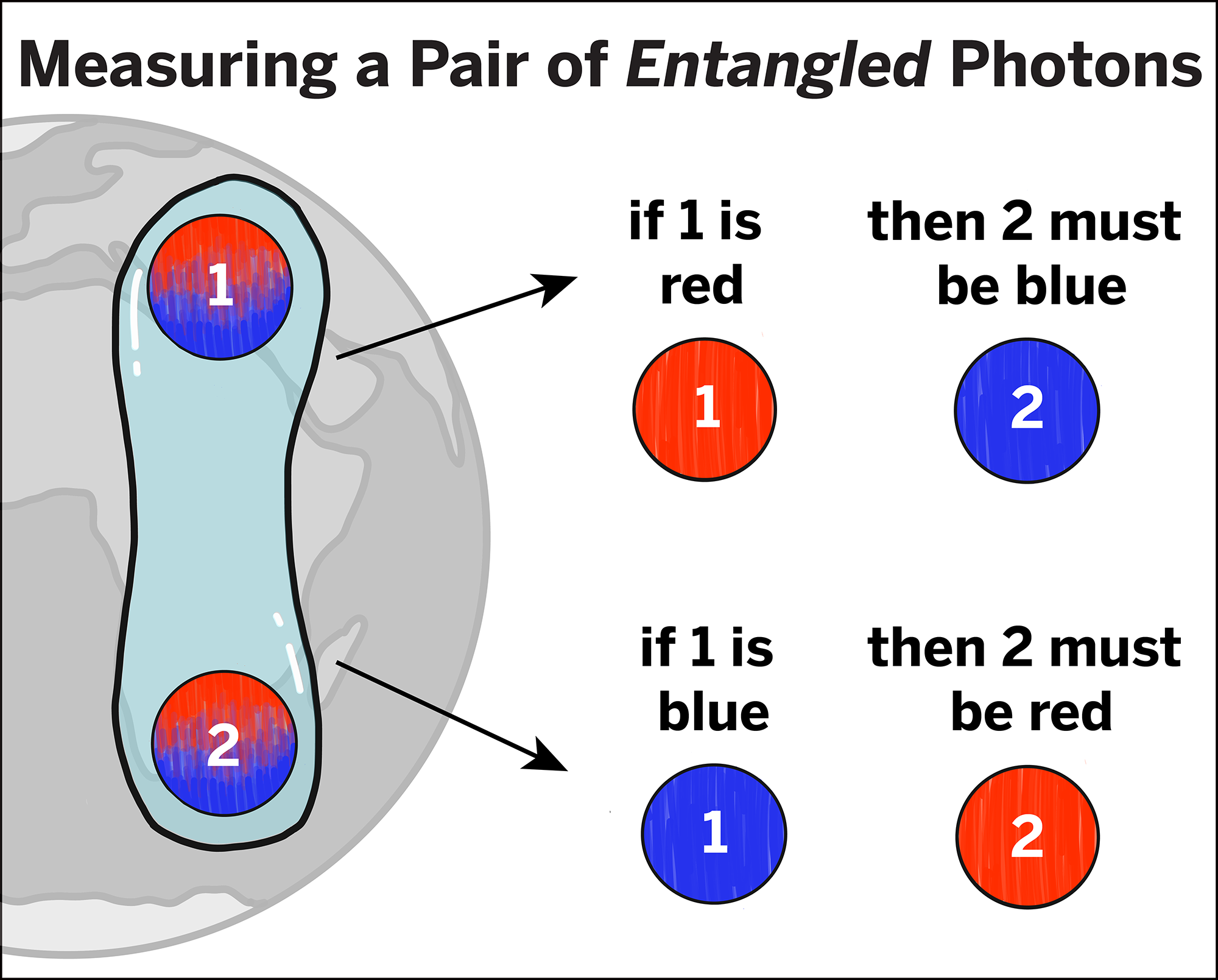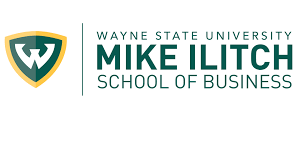Quantum Computing Explained
“Not only is the Universe stranger than we think, it is stranger than we can think.”
― Werner Heisenberg
Introduction
Table of Contents
- Quantum Computing Explained (7:00)
- Companies, Countries Battle to Develop Quantum Computers | 60 Minutes (13:14)
- Lunch & Learn: Quantum Computing (39:14)
- What Is Quantum Advantage? (1:19)
- Quantum Algorithms (9:55)
- Bits and Qubits (0:30)
- Entanglement (2:57)
- Quantum Entanglement Explained (17:06)
- Einstein's Quantum Riddle (53:12)
Quantum Computing Explained (7:00)
"By using entangled qubits, quantum computers could tackle real-world problems that traditional computers simply can’t cope with, for example, a salesman has to travel to several cities and wants to find the shortest route. Sounds easy, but with just 30 cities, there are so many possible routes it would take an ordinary computer, even a powerful one, hundreds of years to try each one and find the shortest. But with a handful of entangled qubits, a quantum computer could resolve the optimal path in a fraction of the number of steps."
What is a Quantum Computer? How is it different from traditional computing? In this video Jessie Yu explains the five key elements of a quantum computer and the implications for quantum computing.
- Superposition
- Gates
- Measurement
- Interference
- Entanglement
What is Quantum Computing?https://www.youtube.com/watch?v=lt4OsgmUTGI
Professor Andrea Morello, Professor of Quantum Engineering at University of New South Wales, takes us on a journey through the inner workings of a quantum computer. He gives an accessible introduction to the physical principles that underpin quantum information, and highlights the differences and similarities between classical and quantum processors.
---------------Quantum Computing
- information is physical:
- 0 is a physical reality; the voltage across the terminals
- quantum state: need 2N numbers to describe;
- 70 qubits contain as much as all the digital data on the planet
- quantum computers are good at complex calculations / combinatorial problems
- there are 30,045,015 combinations to arrange 20 eggs in a 30 egg container
- Drugs, Material Design,
- Haber Process: way to make fertilizer (ammonia - NH3)
- Database Search: Grover's algorithm
- Factoring: Shor's algorithm - classical encryption - find the prime factors
- Quantum safety is more advanced
- Quantum Mechanic is just the way things are
- Quantum information is exponentially dense
- Quantum computers can be built using the same manufacturing technology
Quantum advantage is defined as the state where we solve a problem which is of high value with quantum computers which cannot be solved with any of the biggest super computer you can ever build in the world.
This is something where we expect this to come at the end of 2023 where we have reached the thousand qubit barrier. There should then be problems which really can be solved and provide the value of with quantum computers.
Quantum algorithms are powerful computational tools that leverage the unique properties of quantum mechanics to solve complex problems.
These algorithms employ techniques such as entanglement, superposition and interference to explore exponentially large problem spaces in a relatively short amount of time. This makes them invaluable for applications such as simulating complex systems, solving optimization problems and performing secure communication.
Quantum algorithms will become increasingly important in helping us solve some of the world's most pressing challenges.
---------------
Quantum Algorithm Zoo: https://quantumalgorithmzoo.org/
Quantum Algorithms: https://quantumalgorithms.org/
Quantum Computing Patterns: https://quantumcomputingpatterns.org/#/
Entanglement:
This animation uses coin flips to illustrate some of the features of quantum entanglement.

Quantum Atlas:
https://www.youtube.com/watch?v=9_pbkkD33pQ
Quantum Entanglement:
https://quantumatlas.umd.edu/entry/entanglement
Chapters:
0:00 - Weirdness of quantum mechanics
1:51 - Intuitive understanding of entanglement
4:46 - Is superposition real?
5:40 - The EPR Paradox
6:50 - Spooky action and hidden variables
7:51 - Bell's Inequality
9:07 - How are objects entangled?
10:03 - Is spooky action at a distance true?
10:40 - What is quantum entanglement really?
11:31 - How do two particles become one?
13:03 - What is non locality?
14:05 - Can we use entanglement for communication?
15:08 - Advantages of quantum entanglement
15:49 - How to learn quantum computing
Summary: Albert Einstein described Entanglement as “spooky action at a distance". So what is entanglement? Electrons have a quantum property called spin that makes them act like little magnets. We will always measure it pointing in one direction or the opposite. If we entangle two electrons so that their spins are always pointing in opposite directions, the two spins are said to be correlated. If we entangle the two electrons in this way and fire them in opposite directions, we don’t know which one of the pair is up and which one is down until we make a measurement. If we find that electron 1 is spin up. We know the spin of electron 2 must be down. Why isn't this like a pair of gloves? The handedness of the gloves is there from the start. It never changes. With entangled particles that’s not the case. They are in a superposition.
Prior to measurement, there is no definite answer. How do we know superposition is real? The double slit experiment is good evidence. Entangled particles are stranger, because a measurement on one particle determines the outcome for both of them. In 1964, Irish physicist John Bell figured out how to set up an experiment, Bell's inequality, to determine who was right. Bell proved that quantum mechanics predicted stronger statistical correlations in the outcomes of some measurements than any hidden variable theory could. When Bell’s experiment was first done in a lab in the 1970’s by physicists John Clauser and Stuart Freedman at the University of California Berkeley, it showed that there was no sign of hidden variables.
How are two particles entangled? You can entangle two photons from birth or you can bring two quantum objects very close together. Once objects are entangled, they’re not separate. They are, really two parts of a single object. In quantum mechanics, objects are described by wave functions: mathematical expressions that encapsulate all that can be said about the object. This wave function can be spread out in space. This is why particles can act as if they are waves. But if we entangle two particles, they are then described by a single wave function. They are mathematically the same object.
Entanglement tells us is that the quantum world has nonlocality: things at one place don’t depend just on what happens in the neighborhood of that place, as they do in the classical world. Quantum non locality is an alternative to spooky action at a distance. It will not let us communicate faster than light because only knowing how they are correlated can provide any meaningful information. The advantage to using entangled particles to send messages is you can encrypt the message in a way that it can never be intercepted and decrypted without that decryption being detected.
Quantum Entanglement Explained - How does it really work?
https://www.youtube.com/watch?v=unb_yoj1Usk
Einstein called it “spooky action at a distance,” but today quantum entanglement is poised to revolutionize technology from computers to cryptography. Physicists have gradually become convinced that the phenomenon—two subatomic particles that mirror changes in each other instantaneously over any distance — is real. NOVA follows a ground-breaking experiment to use quasars at opposite ends of the universe to settle remaining questions.
-
This strange theory has enabled us to develop the remarkable technologies of our digital age, but it makes a very troubling prediction, called “quantum entanglement.”
-
Nature’s fundamental building blocks could be connected and influence each other instantaneously, as if the space between them doesn’t exist, as if two objects can mirror each other without any apparent connection.
-
Before it’s detected, instead of being a solid particle, an electron is just a fuzzy wave, a wave of probability. It’s that’s the electron really is a combination of every possible place it could be, until we look at it.
-
That shouldn’t immediately and instantaneously change something that is going on over there; the “principle of locality,” as we call it.
-
A “qubit” can be zero or one, or a combination of both. A particle or tiny quantum system can be made into a qubit. It’s not just pairs of particles that can be entangled, groups of qubits can be linked with entanglement to create a quantum computer: the more qubits, the greater the processing power.
-
While quantum entanglement may be a threat to traditional encryption, it also offers an even more secure alternative, a communication system that the very laws of physics protect from secret hacking.
-
Accepting that entanglement is a part of the natural world around us has profound implications. It means we must accept that an action in one place can have an instant effect anywhere in the universe, as if there’s no space between them, or that particles only take on physical properties when we observe them, or we must accept both.
Einstein's Quantum Riddle: https://www.pbs.org/wgbh/nova/video/einsteins-quantum-riddle/
